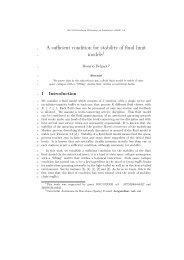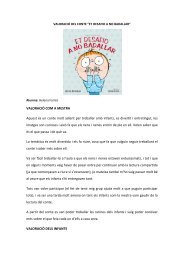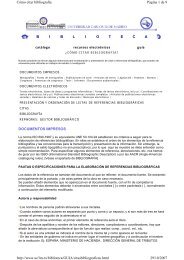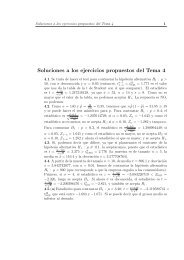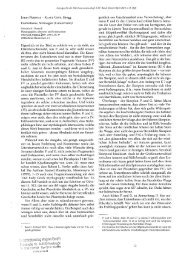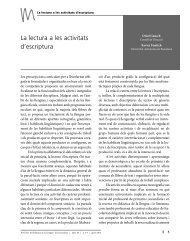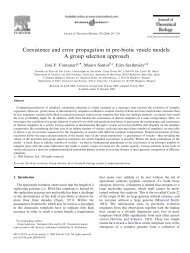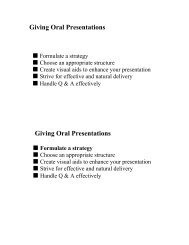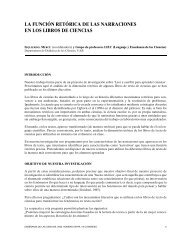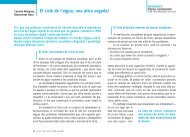please do not cite without permission from the authors
please do not cite without permission from the authors
please do not cite without permission from the authors
Create successful ePaper yourself
Turn your PDF publications into a flip-book with our unique Google optimized e-Paper software.
also helped European countries, by providing <strong>the</strong>m with privileged access toAfrican raw materials at a time when <strong>the</strong>ir prices were rising on world markets.After <strong>the</strong> review of Lomé IV in 1995, a debate opened up about <strong>the</strong> results of<strong>the</strong> Conventions and <strong>the</strong> need to change <strong>the</strong> existing pattern of relations. Thefirst major intervention in this discussion was provided by <strong>the</strong> publication of <strong>the</strong>so-called ‘Green Paper’, in which for <strong>the</strong> first time <strong>the</strong> European Commissionformally launched its main arguments for a basic re-examination of <strong>the</strong> existingscheme.In this <strong>do</strong>cument <strong>the</strong> Commission emphasised its dissatisfaction with <strong>the</strong>previous model with regard to both its ambitious general aims (povertyreduction and faster economic and social development) and also its lesser andmore concrete targets (<strong>the</strong> share of <strong>the</strong> ACP countries’ exports in Europeanmarkets). In fact, <strong>the</strong> percentage participation of EU imports <strong>from</strong> ACPcountries (and <strong>from</strong> SSA) had fallen ra<strong>the</strong>r than risen. There was a majorcontrast here with o<strong>the</strong>r developing economies, especially in Asia, which hadincreased <strong>the</strong>ir share of <strong>the</strong> European market even though <strong>the</strong>y had receivedno preferential treatment. 4Figure 1 shows <strong>the</strong> imports of <strong>the</strong> EU(27) <strong>from</strong> various country groups,including <strong>the</strong> ACP countries and <strong>the</strong> member countries of SADC, for <strong>the</strong> years1999 to 2009. Unlike some o<strong>the</strong>r regions, and some Asian countries inparticular, <strong>the</strong> percentage of <strong>the</strong>se two groups in EU imports <strong>do</strong>es <strong>not</strong> increasealthough for both groups <strong>the</strong> absolute volume of imports did growsignificantly. 54 To be precise, between 1976 and 1992 <strong>the</strong> ACPs share of EU imports fell <strong>from</strong> 6.7 to 3.7percent although in volume terms ACP exports to <strong>the</strong> EU grew at 2 percent a year. This wasmuch slower than <strong>the</strong> annual growth of exports to <strong>the</strong> EU <strong>from</strong> Mediterranean countries (6percent) or Asian countries (12 percent) (Goodison and Stoneman, 2005).5 In absolute terms imports <strong>from</strong> ACP countries rose by 60.4 percent between 1999 and 2009but <strong>the</strong>ir importance as sources of EU27 imports stayed constant, at around 4.5 percent. EU27imports <strong>from</strong> SADC rose by 44.7 percent in <strong>the</strong> same decade; <strong>the</strong>ir share was slightly above 2percent in some years but fell to 2 percent in 2009. The so-called ‘dynamic Asian economies’(DAE: South Korea, Hong Kong, Malaysia, Singapore, Taiwan, Thailand) increased <strong>the</strong>irexports to <strong>the</strong> EU27 by 12.9 percent in absolute value, which, given <strong>the</strong> general increase inEU imports, <strong>the</strong>ir share fell by 3.6 percentage points. The most spectacular increase, both intotal value and in percentage of <strong>the</strong> total, was <strong>from</strong> China (excluding Hong Kong). Totalexports rose by 60.4 percent between 1999 and 2009 while China’s share of EU importsremains constant at 4.5 percent.5




